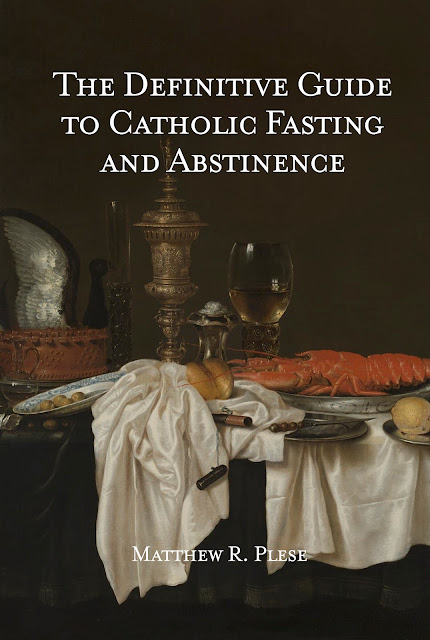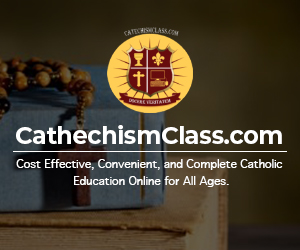The following is an excerpt from The Twelve: Lives and Legends of the Apostles. This can serve as a meditation as we prepare for the Feast of St. James the Greater
Catholics know that death is not the end but the beginning of a new life and so it proved with St. James. His tomb in Spain is a place of religious pilgrimage for hundreds of thousands of people every year. In the past, the Spanish people were inspired by St. James as they reconquered their country from the Muslims.
In 711, General Tariq Ibn-Ziyad led a force of Islamic Moors of Arab and Berber descent to conquer most of Iberia. Fortunately, the Islamic force was halted by Charles Martel and his army at the Battle of Tours in 732. Yet most of Spain was still under foreign rule and, according to legend, Charlemagne (742-814) was recruited to rectify this situation.
“Charlemagne saw a path of stars in the sky, beginning in the Frisian Sea and extending through Germany and Italy, Gaul and Aquitaine, passing directly over Gascony, Vasconia, Navarre and Spain to Galicia, where the body of Saint James lay buried and undiscovered. Looking upon this stellar path several times every night, he began to mediate its meaning. A knight of splendid appearance, more handsome than words can describe, appeared to Charlemagne one evening in a vision as he sat in deep meditation.
“What are you doing, my son?” the knight asked.
“To which the king responded, “Who are you, sir?”
“I am Saint James the Apostle, disciple of Christ…and whose body lies forgotten in Galicia, a place still shamefully oppressed by the Saracens. I am deeply disturbed by the fact that you, who have conquered so many cities and nations, have not liberated my lands from the Saracens… The path of stars that you have contemplated in the sky is the sign indicating that you must take a great army from here to Galicia to do battle with those perfidious pagans, to free my path and my lands and to visit my basilica and my tomb. After you, all peoples from sea to sea will walk there as pilgrims, begging forgiveness for their sins and proclaiming the greatness of the Lord…”
(Kevin R. Poole, editor and translator of The Chronicle of Pseudo-Turpin, Book IV of the Liber Sancti Jacobi (New York: Italica Press, 2014) pgs. 5-6)The historical Charlemagne was forced to retreat from the Muslims in Spain and then tragically, the Basques attacked his baggage train and killed Roland, the warden of the Breton March. The incident inspired the Song of Roland but brought the Spanish people no closer to freedom. However, the Reconquista had already begun in 718 when Pelagius defeated an Islamic Umayyad patrol in the Battle of Covadonga in Galencia. Although there were occasional forays into Galencia, the Muslims never controlled this part of Spain. Galencia was incorporated into Asturias, a Christian kingdom in the northwest of Spain.
In 812, Bishop Teodomiro, Bishop of Iria Flavia in Galencia, Spain, was visited by a group of men in his diocese. They told him that the anchorite Palagio with other devote men had seen a bright star over the hill of Libredon. Not only this, but they had seen lights moving among the forest while unseen voices sang religious chants. Stirred by this miracle, the Bishop determined to investigate the area with his canons and some prominent citizens on July 25th. After clearing away the underbrush, the men discovered a cave. Inside of the cave were three stone coffins. The largest of the coffins was in the middle with its occupant identified as Saint James – “Here lies Santiago, son of Zebedee and Salome, brother of St. John, whom Herod beheaded in Jerusalem. He came by sea borne by his disciples to Iria Flavia of Galicia…”
King Afonso II of Asturias, with the nobles of his court, journeyed to the shrine and ordered that a church be built to honor Saint James. Pope Leo III informed the Archbishops and the Bishops of the discovery. A small town grew up near the cave called Santiago de Compostela and the body of Saint James was moved there in 829. A beautiful Church was constructed during the reign of Afonso III in 893. (Catherine Gasquoine Hartley The Story of Santiago de Compostela (London: J. M. Dent & Sons, Ltd., 1912) pgs. 22-27)
The pilgrimage of St. James became very popular – third in popularity after Jerusalem and Rome. Even a Moorish ambassador was astonished at the crowds:
“When Ali-ben-Yussuf, the Almoravide, sent an embassy to Dona Urraca about 1121, the ambassadors were amazed at the throngs of pilgrims who choked the road. They asked the subaltern detailed to escort and assist them, the Centurion Peter..: ‘Who is it the Christians so revered, for whom so great a multitude comes and goes, from this side and the other of the Pyrenees, so that the road is scarcely cleared for us?’ And Peter answered with a fine gesture: ‘He who deserves such reverence is St. James whose body there is buried…’” (Georgiana Goddard King, The Way of Saint James, Volume 1 (New York: G. P. Putnam’s Sons, 1920) pg. 107)In 1122, Pope Calixrus II granted a Holy Year to the Cathedral of Santiago de Compostela when July 25th (Saint James’ feast day) falls on a Sunday. On that year, the Holy Door is open from January 1st to December 31st and pilgrims are granted special indulgencies. The years 2004, 2010, 2021 and 2027 were or will be Holy Years and there are usually more pilgrims during these years. The Codex Calixtinus, an illustrated manuscript of the 12th century, is a description of the pilgrimage to the Cathedral of Santiago de Compostela and includes music, stories of St. James, miracles and advice about the route. Despite its name, it was not written by Pope Calixrus II but by unknown authors and organized by Aymeric Picaud, a French scholar.
St. Francis of Assisi, like many others, went to Santiago de Compostela with a few of his companions:
“A the beginning and commencement of the Order, when as yet there were few brothers and the Houses had not been taken into possession, Saint Francis for his devotion went to Saint James’s of Galicia… Having won thither, while he was spending the night in prayer in the church of St. James, it was revealed by God unto Saint Francis, that it behooved him to take possession of many places throughout the world, because his Order must needs grow and increase into a vast multitude of brothers” (The Little Flowers of Saint Francis translated by T.W. Arnold (London: J. M. Dent and Co., 1907) pg. 11)Throughout the ages, pilgrims have had different reasons to visit the tomb of St. James. Some came to worship, others to fulfil a vow, still others petitioned the saint to alleviate their or other’s distress. Fray Miguel Capeller and Fray Leonardo de Gratia, for instance, were sent to ask St. James to stop the plague in Barcelona in 1465 (The Way of Saint James, pg. 123).
Church authorities sometimes required penitents to make the pilgrimage to atone for their sins. There were several official roads to Santiago – the one from France being one of the most popular. Most pilgrims purchase a credencial - a small book which is marked by the local church or town hall with an official St. James stamp as the pilgrim progresses on his or her journey. The pilgrim must travel at least 100 km by foot or 200 km by bicycle (about 62 and 127 miles respectively) to receive the compostela. The compostela is a certificate of achievement given by the Pilgrim’s Office to those who arrive at Santiago de Compostela after traveling the required distance. According to the Confraternity of Saint James, the pilgrimage is still popular with 272,135 receiving the compostela in 2010 (a Holy Year) and 262,469 in 2015.
St. James is often shown with a seashell and a pilgrim’s hat and staff to emphasize his protection over the pilgrims who visit Santiago. However, St. James represents more than a protector of pilgrims. As we saw above, St. James appeared to Charlemagne as a great knight. St. James was an inspiration to the Spanish as they attempted to reconquer their land from the Moors. The great warrior El Cid invokes St. James as his army of four thousand prepares to fight the Moorish force of fifty thousand:
“Our bishop, good Don Jerom, an early mass shall say, And give us absolution before the dawn of day. Then we shall sally forth and assault them in the names Of the Lord and His Apostle our worthy good St. James”There are legends of St. James on his white horse leading the Spanish to victory against the Moors. The Spanish achieved their final victory in 1492 when Ferdinand and Isabella defeated the last Moorish army and Spain was finally free.
Collect:
Sanctify and protect Your people, O Lord. Let the assistance of Your apostle James strengthen them that they may serve You with confidence and please You by their conduct. Through our Lord . . .
















